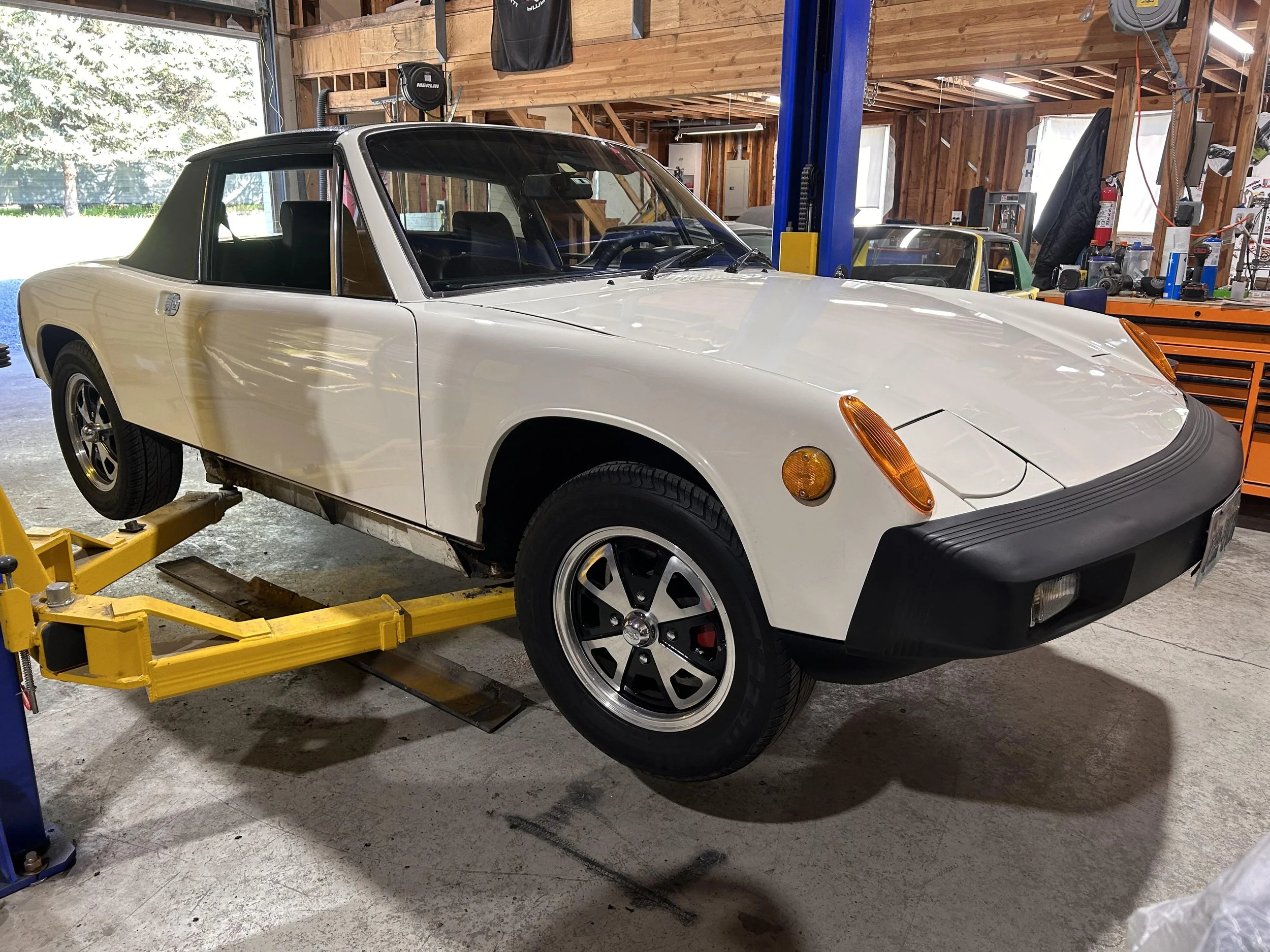914 Vs 914-6, What’s The Difference?
It seems like whenever you talk about any model of car — whether it’s a Ford Mustang or a Lotus Esprit — one of the first questions people ask is: what’s the highest-performance iteration, and how much better is it really? For the Porsche 914, the answer is clear: the Porsche 914/6. In this article, we’re going to dive into what makes the six-cylinder 914 special and how subtle changes improved the 914 into a better driving machine.
And before we fully break into it, we will only be covering the standard 914/6 option in the article and not jumping into the different options such as the /6 GT, /6 R, M471-equipped cars, and the 914/8 cars. If you want to learn about those, hang tight, we will cover the more uniquely optioned 914s in a future blog. Let's jump in, shall we?
In case you didn’t already know, the base Porsche 914 was a partnered creation between Porsche and Volkswagen, including many drivetrain components from VW. Standard models came with a 1.7-liter VW flat-four that managed between 80–100 horsepower, depending on model year. In the late 1960s and early 1970s, that was a respectable figure for a compact, lightweight mid-engine sports car — more than enough to make it fun and approachable on twisty backroads.
That was, at least, unless you opted for the Porsche-built six-cylinder option.
Alongside the VW-sourced drivetrains came a 2.0-liter flat-six, borrowed from the 911T and fed by a pair of carburetors. This engine offered roughly 30 more horsepower than the four-cylinder versions, but the difference was felt in more ways than the numbers suggest. With a 0–60 mph time between 8.3 and 9.0 seconds, the 914/6 was a noticeable leap over the standard 914’s 10–13 second range. Beyond acceleration, the six-cylinder delivered a smoother powerband, more torque, and that unmistakable 911 exhaust note — a sound that transformed the 914’s character entirely.
But if you thought the engine was the only difference, you’d be mistaken.
While the 914/6 shared the same body shell and general suspension layout, it came with several subtle but meaningful changes. The six-cylinder added about 200 pounds to the rear, giving it a slightly different weight bias — more stable at high speed, though a bit less tossable than its featherweight sibling. The 914/6 also used five-lug wheels instead of the standard four-lug setup, along with larger front and rear disc brakes borrowed from the 911. These changes didn’t just improve stopping power — they gave the car a more planted, confident feel on the road.
Inside, the differences were more restrained but still pure Porsche. The ignition switch moved to the left side of the steering wheel, staying true to Porsche tradition, and small touches — from unique badging to subtle trim upgrades — reminded drivers they were in something special.
While the 914/6 was quicker and more refined, it also came at a much higher price. In fact, it cost nearly as much as a base 911, which limited sales to just over 3,300 units. The regular 914, on the other hand, sold more than 115,000 units, making it the more common and accessible choice.
In the end, the 914/6 wasn’t just a faster 914 — it was a bridge between Porsche’s accessible fun car and its high performance heritage. The four-cylinder 914 may have been the scrappy, affordable sports car for the masses, but the six-cylinder version gave enthusiasts breaking into the European sports car world a taste of what true Porsche DNA feels like.
Visit Our Porsche 914 Shop — Just Over an Hour from Salem
Martin Mid Engine
📍 25858 S Elwood Rd, Colton, OR 97017
📞 (503) 824-2102
🕘 Mon–Fri, 9am–5pm
Just northeast of Salem via OR-214 through Silverton. If you're serious about fixing your 914’s rust the right way, we're worth the drive.





